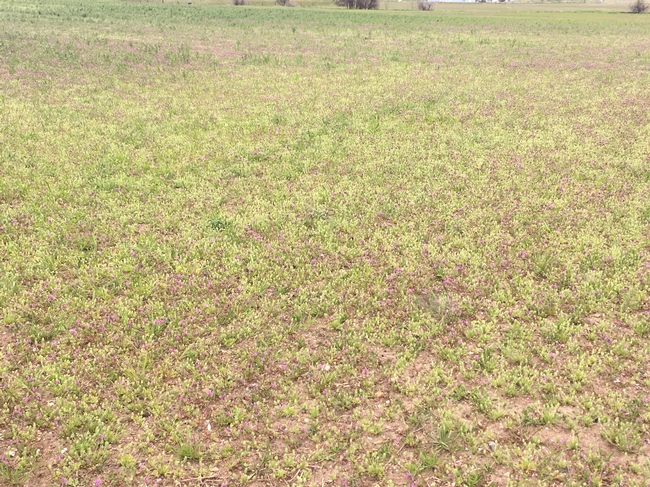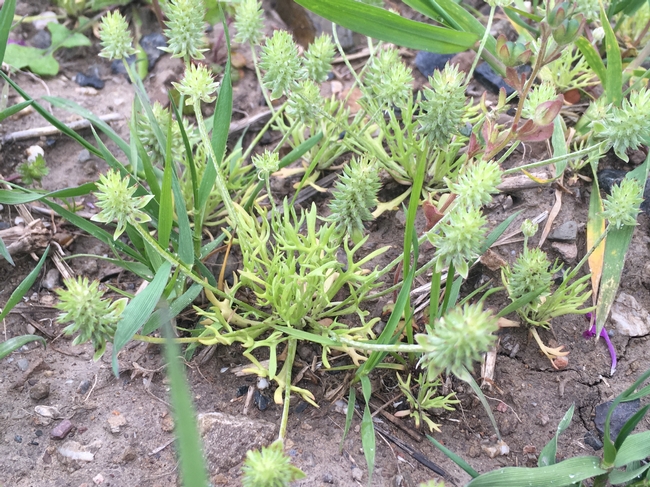The weather pattern this year in the Intermountain Region of Northern California has been radically different from what we have seen the previous 4 years. In most years, high pressure usually moves in periodically sending Pacific cold fronts farther north and giving us periods of warm dry weather. However, this winter and so far this spring high pressure has not dominated and we have been continually bombarded by cold fronts.
The frequent rains this winter and spring has resulted in changes in the weed spectrum. One weed we have seen a lot more of in this area is bur buttercup. Bur buttercup (Ranunculus testiculatus) has been widespread this spring and in some cases dense populations have been observed. It germinates early, prefers high moisture and cool temperatures and can be seen as early as February and into April or May in this environment.


Bur buttercup is a winter annual. It emerges, flowers and sets seed early in the spring when temperatures reach around 45-50 degrees. Infestations can be significant, and it can occur in dense patches (Figure 1). The plant has no stems and the basal leaves and flower pedicles originate at the crown of the plant. The leaves are divided into 3 primarily lobes, which are further subdivided into 1-2 secondary loves. Each blossom generally has five bright yellow petals that are very small, measuring less than ¼ inch long. When mature, each blossom turns into ½- ¾ inch long bur (Figure 2). Bur buttercup looks like a “wimpy” weed because it only grows to be 2 or 3 inches tall. Despite its appearance, it can be a concern because of its high toxicity.
Toxicity
Bur buttercup is highly toxic to cattle, sheep and horses and can affect humans by irritating skin and causing blisters. The plant contains ranunculin, which turns into a toxic compound protoanemonin when the plant is crushed for example by chewing. This toxin is not a threat in baled hay and the plant is so small it is not likely to be present in hay.
Usually it is not a problem in pastures because livestock generally avoid the plant due to its acrid or pungent taste and because the poison causes blisters in the mouth. However, when forced to eat it because there is a lack of other more palatable forage, bur buttercup can be a problem.
There are little data indicating the consumption rate needed to affect livestock. One experiment showed that sheep died after exposure exceeded 1.1% of their body weight. How this relates to toxicity levels in cattle is unknown. However, assuming similar toxicity in cattle, if you have an 800 lb. heifer, for example, the animal would need to consume about 9 pounds of the green plant. Fortunately, this is not easily done because other range plants are more prevalent and palatable. We don't know how much of an issue bur buttercup may be with cattle grazing in infested rangeland or pasture in the intermountain area this year, but exercise caution if you see significant amounts of this weed in your fields without much other more palatable plants.